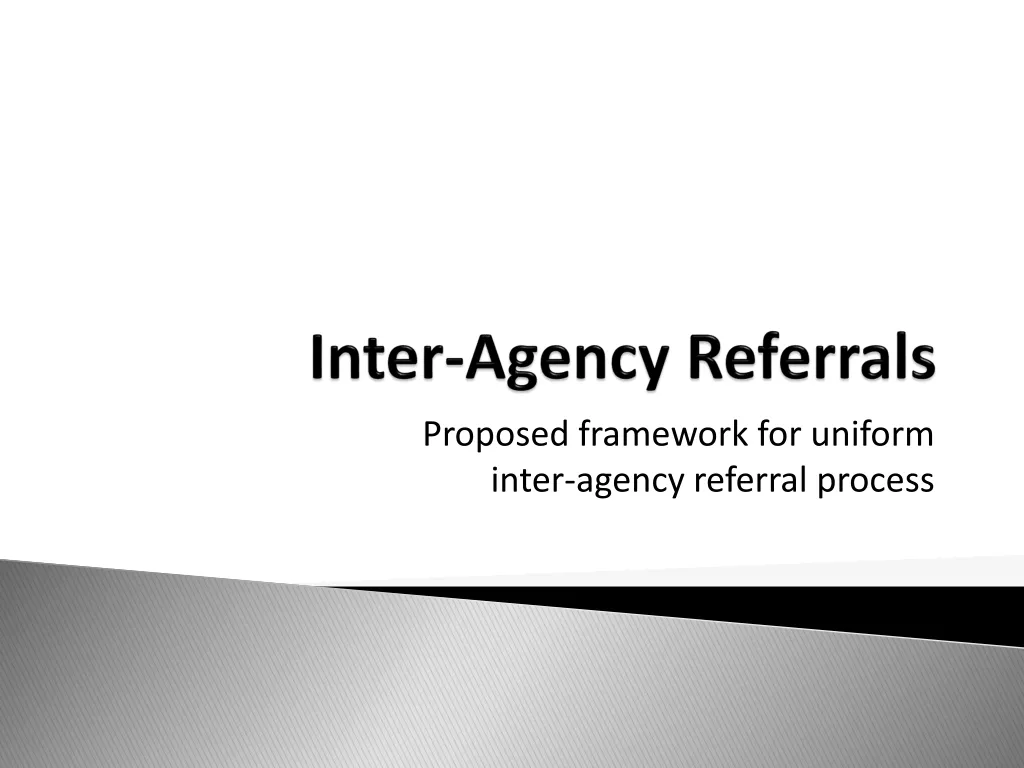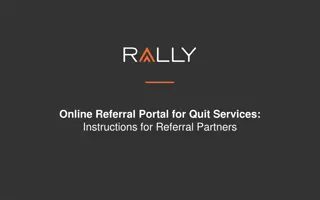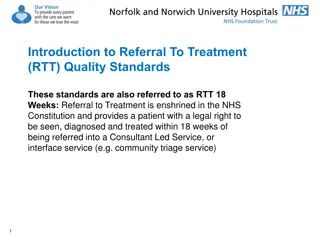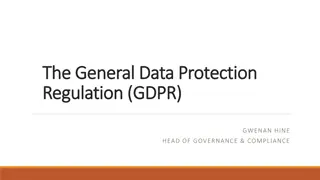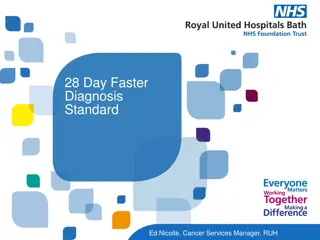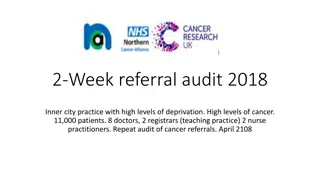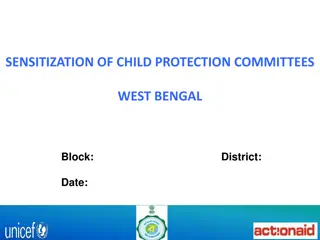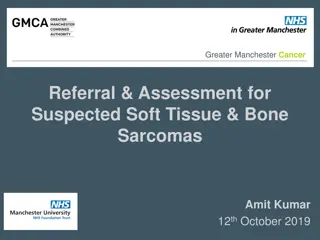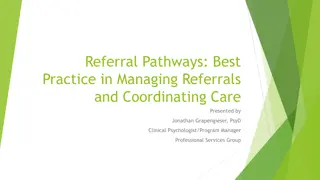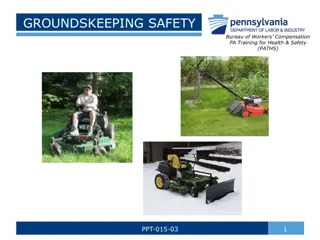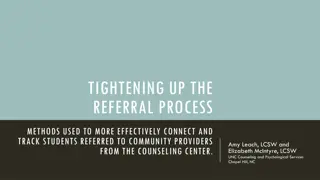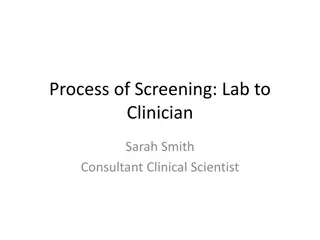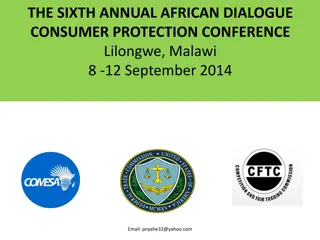Effective Referral Process in Child Protection Programs
Understanding the importance of an effective referral process in child protection programs is crucial. It ensures rapid access to services, prevents children from falling through the cracks, and reduces stress for service providers. Criteria and principles for setting up a good referral system are outlined, emphasizing the need for clear communication, consent, and tracking mechanisms. Making referrals child-centered is key, focusing on the child's best interests and ensuring their participation in the process.
Download Presentation

Please find below an Image/Link to download the presentation.
The content on the website is provided AS IS for your information and personal use only. It may not be sold, licensed, or shared on other websites without obtaining consent from the author.If you encounter any issues during the download, it is possible that the publisher has removed the file from their server.
You are allowed to download the files provided on this website for personal or commercial use, subject to the condition that they are used lawfully. All files are the property of their respective owners.
The content on the website is provided AS IS for your information and personal use only. It may not be sold, licensed, or shared on other websites without obtaining consent from the author.
E N D
Presentation Transcript
SLIDE 2 LEARNING OUTCOMES At the end of this module, you should: Understand the wide range of formal and informal actors who play a role in referrals; Identify local existing and potential actors who can provide support for children at risk of or experiencing violence; Explore successes and barriers in existing referral processes; Have a clear understanding of any referral mechanisms that are locally in place.
SLIDE 3 WHY IS IT IMPORTANT TO HAVE AN EFFECTIVE REFERRAL PROCESS? A violence response requires interventions from multiple actors A referral process can enhance rapid access to multiple services The child is less likely to fall through the cracks and get lost to the system A referral process enables a child to receive comprehensive services from different people who have different skills Can reduce stress and workload for individual service providers, if a referral process is well coordinated
SLIDE 4 CRITERIA FOR SETTING A GOOD REFERRAL SYSTEM Identify and map available services or organizations Develop tools for monitoring referrals and coordination Create a directory list Establish referral pathways Establish informal or formal agreements
SLIDE 5 PRINCIPLES FOR AN EFFECTIVE REFERRAL PROCESS Have one lead case manager responsible for following the referral through Be clear why you are making the referral, and to whom, and for what Be sure that the required support can be provided at the referral point Ensure that the child or caregiver knows why and agrees to the referral being made Only refer to places that the client can get to Always get consent from the client before making the referral Referral or case management information system, that can confirm the referral has been made and track onward and counter-referrals
SLIDE 6 MAKING THE REFERRAL CHILD- CENTERED Always explain what you would like to do and why a brochure is not enough Think of the child s best interests respect a child s right to not seek the referral service; if there is a risk of harm to the child, explain why you are making a report Actively help the child access the referral Offer to make a call or contact the referral point on the child s/guardian s behalf Invite the referral person to the health center and introduce, if appropriate or escort the child if appropriate
SLIDE 7 MAKING A REFERRAL PATHWAY WORK FOR YOU Be clear who the lead case manager is (for you and for your institution) Get to know at least one individual at that service personally Be able to refer them by name in discussion with child/guardian Understand what is provided so you can tell child/guardian Maintain relationships through: 1. Regular meetings (e.g. child protection coordination forums) 2. Information-sharing and visits to each other s facilities 3. Hosting co-training
SLIDE 9 SUMMARY Violence requires interventions from multiple actors Be child-centered ask, explain, support Always keep the child s best interests first think safeguarding Support can come from multiple sources both formal and community / informal






